- Home
- Isaac Asimov
Asimov's New Guide to Science Page 19
Asimov's New Guide to Science Read online
Page 19
Undoubtedly Jupiter’s atmosphere has a very complicated chemistry, and we will not know enough about it until a probe can be sent into it and made to survive long enough to send back information. The Great Red Spot is (as most astronomers had suspected) a gigantic, more-than-Earth-size, and more or less permanent hurricane.
The whole planet seems to be liquid. The temperature rises rapidly with depth, and the pressures serve to turn the hydrogen into a red-hot liquid. At the center, there may be a core of white-hot metallic hydrogen in solid form. (Conditions in Jupiter’s deep interior are too extreme to duplicate on Earth so far, and it may be some time before we can make firm estimates about it.)
THE JUPITER PROBES
The Jupiter probes took photographs of the four Galilean satellites at close quarters; and for the first time, human eyes saw them as something more than tiny, featureless disks.
More accurate information was obtained about their actual size and mass. These proved to involve only minor corrections, although Io, the innermost Galilean, was found to be a quarter more massive than had been thought.
Ganymede and Callisto, as one might have guessed from their low densities, are made up of light substances, such as water. At the low temperature one would expect from their distance from the sun (and as small bodies, without the great internal heat of Jupiter or even Earth), these substances are in solid form and are therefore referred to as ices. Both satellites are littered with numerous craters.
The satellites could be heated by the tidal influences of Jupiter, which tend to flex the substance of a satellite, creating heat by friction. Tidal influence decreases rapidly as distance increases. Ganymede and Callisto are far enough from Jupiter for tidal heating to be insignificant, and remain icy.
Europa is closer and was too warm at some early stage in its history to gather much in the way of ices; or, if it did, much of them melted, vaporized, and was lost to space in the course of that history. (The gravitational fields of the Galilean satellites are too small to hold an atmosphere in the presence of tidal heating.) It may be the inability of collecting the plentiful ices, or the loss after collecting, that makes Europa and 10 distinctly smaller than Ganymede and Callisto.
Europa has retained enough of the ices to have a worldwide ocean (as Venus was once thought to have). At Europa’s temperature the ocean is in the form of a worldwide glacier. What’s more, this glacier is remarkably smooth (Europa is the smoothest solid world astronomers have yet encountered), although it is crisscrossed with thin, dark markings that make it look remarkably like Lowell’s maps of the planet Mars.
The fact that the glacier is smooth and not punctured with craters leads one to suppose that it may be underlaid with liquid water, melted by tidal heating. Meteoric strikes may (if large enough) break through the icy coating, but water will then well up and freeze, healing the break. Smaller strikes may cause fissures, which come and go; or the fissures may be caused by tidal effects or other factors. On the whole, though, the surface remains smooth.
Io, the innermost Galilean, receives the most tidal heating and is apparently completely dry. Even before the coming of the probes, it seemed puzzling. In 1974, the American astronomer Robert Brown reported Io to be surrounded by a yellow haze of sodium atoms. Indeed, it seemed to travel through a thin haze that filled its entire orbit like a doughnut circling Jupiter. Io had to be the source of the haze, but no one knew how.
The Pioneer probes showed that Io actually has a thin atmosphere about 1/20,000 the density of Earth’s, and the Voyager probes solved the problem by taking photographs that showed that Io possesses active volcanoes. They are the only active volcanoes known to exist other than Earth’s. Apparently regions of molten rock (heated by Jupiter’s tidal action) lie under Io’s surface and have, in various places, burst through the crust in sprays of sodium and sulfur, resulting in the atmosphere and the orbital doughnut. Io’s surface is caked with sulfur, giving it a yellow to brown color. Io is not rich in craters, since these have been filled with volcano material. Only a few dark markings indicate craters too recent to have been filled in.
Within the orbit of Io is satellite Amalthea, which cannot be seen from Earth as anything but a dot of light. The Voyager probes showed Amalthea to be an irregular body, like the two satellites of Mars, but much larger. Amalthea’s diameters vary from 165 to 87 miles.
Three additional satellites were discovered, each closer to Jupiter than Amalthea, and each considerably smaller than Amalthea. They are Jupiter XIV, Jupiter XV, and Jupiter XVI and have diameters estimated to be 15, 50, and 25 miles, respectively. Under present conditions, none of these satellites can possibly be seen from Earth, considering their size and their closeness to Jupiter’s blaze.
Jupiter XVI is the closest to Jupiter, at a distance of only 80,000 miles from its center—that is, only 36,000 miles above its cloud surface. It races about Jupiter in 7.07 hours. Jupiter XIV is only slightly farther and completes an orbit in 7.13 hours. Both move about Jupiter faster than it rotates on its axis, and, if they could be observed from Jupiter’s cloud layer, would (as in the case of Phobos, seen from Mars) seem to rise in the west and set in the east.
Within the orbit of the innermost satellite, there is debris which shows up as a thin, sparse ring of bits and pieces circling Jupiter. It is too thin and sparse to be seen from Earth in the ordinary fashion.
Saturn
Saturn was the most distant planet known to the ancients, for despite its distance it shines with considerable brightness. At its brightest, it has a magnitude of −0.75 and is then brighter than any star but Sirius. It is also brighter than Mercury and, in any case, easier to observe because, being farther from the sun than we are, it need not remain in its vicinity but can shine in the midnight sky.
Its average distance from the sun is 886.7 million miles, which makes it 1-5/6 times as far from the sun as Jupiter is. It revolves about the sun in 29.458 years, compared with a revolutionary period of 11.862 years for Jupiter. The Saturnian year is therefore 2½ times as long as the Jovian year.
In many respects, Saturn plays second fiddle to Jupiter. In size, for instance, it is the second largest planet after Jupiter. Its equatorial diameter is 74,600 miles, only about five-sixths that of Jupiter. It is this smaller size, together with its great distance, that makes the sunlight bathing it only half as intense as the sunlight on Jupiter, making it much dimmer than Jupiter. On the other hand, Saturn is still large enough to make a respectable showing.
Saturn’s mass is 95.1 times that of Earth, making it the second most massive planet after Jupiter. Its mass is only three-tenths that of Jupiter, and yet its volume is six-tenths of Jupiter’s.
To have so little a mass in so large a volume, Saturn’s density must be very low; and, indeed, it is the least dense object we know in the solar system, having on the whole, a density only 0.7 times that of water. If we could imagine Saturn wrapped in plastic to keep it from dissolving or dispersing, and if we could find an ocean large enough, and if we placed Saturn in the ocean, it would float. Presumably, Saturn is made up of material that is even richer in very light hydrogen, and poorer in everything else, than Jupiter is. Then, too, Saturn’s weaker gravity cannot compress the substance composing it as tightly as Jupiter can compress its substance.
Saturn rotates quickly; but, even though it is the somewhat smaller body, it does not rotate as quickly as Jupiter. Saturn rotates on its axis in 10.67 days, so that its day is 8 percent longer than Jupiter’s.
Even though Saturn spins more slowly than Jupiter does, Saturn’s outer layers are less dense than Jupiter’s, and it has a smaller gravitational pull to hold them. As a result, Saturn has the larger equatorial bulge and is the most oblate object in the solar system. Its oblateness is 0.102: it is 1.6 times as oblate as Jupiter and 30 times as oblate as Earth. Although Saturn’s equatorial diameter is 74,600, its polar diameter is only 67,100. The difference is 7,500 miles, nearly the total diameter of Earth.
SATURN’S RINGS<
br />
In another respect, Saturn turns out to be unique—and uniquely beautiful. When Galileo first looked at Saturn through his primitive telescope, it seemed to him to have an odd shape, as though its globe was flanked by two small globes. He continued to observe, but the two small globes grew progressively harder to see and finally, toward the end of 1612, disappeared altogether.
Other astronomers also reported something peculiar in connection with Saturn, but it was not till 1656 that Christian Huygens interpreted the matter rightly. He reported that Saturn was encircled by a bright, thin ring that nowhere touched it.
Saturn’s axis of rotation is tipped as Earth’s is; Saturn’s axial tipping is 26.73 degrees, compared with Earth’s 23.45 degrees. Saturn’s ring is in its equatorial plane, so it is tipped with respect to the sun (and to us). When Saturn is at one end of its orbit, we look down from above upon the near side of the ring, while the far side remains hidden. When Saturn is at the other end of its orbit, we look up from below to the near side of the ring, while the far side remains hidden. It takes a little over 14 years for Saturn to go from one side of its orbit to the other. During that time, the ring slowly shifts from far down to far up. Halfway along the road, the ring is exactly halfway between, and we see it edge on. Then, during the other half of the orbit, when Saturn is traveling from the other side back to the starting point, the ring slowly shifts from far up to far down again; and halfway between, we see it edge on again. Twice every Saturnian orbit, or every fourteen years and a bit, the ring is seen edge on. The ring is so thin that, at edge-on times, it simply disappears. Such was the situation when Galileo was observing, at the end of 1612; and, out of chagrin (according to one story), he never looked at Saturn again.
In 1675, Cassini noticed that Saturn’s ring was not an unbroken curve of light. There was a dark line all around the ring, dividing it into an outer and an inner section. The outer section was narrower and not as bright as the inner one. There were two rings, it seemed, one inside the other; and ever since, Saturn’s rings have been referred to in the plural. The dark line is now called Cassini’s Division.
The German-Russian astronomer Friedrich G. W. von Struve called the outer ring Ring A in 1826, and the inner one Ring B. In 1850, an American astronomer, William Cranch Bond, reported a dim ring still closer to Saturn than Ring B. This dim ring is Ring C, and there is no noticeable division between it and Ring B.
There is nothing like Saturn’s rings anywhere in the solar system or, for that matter, anywhere that we can see with any of our instruments. To be sure, we now know that there is a thin ring of matter around Jupiter, and it is possible that any gas-giant planet, like Jupiter or Saturn, may have a ring of debris close to itself. If Jupiter’s ring is typical, however, they are poor, puny things; but Saturn’s ring system is magnificent. From extreme end to extreme end Saturn’s ring system, as seen from Earth, stretches across a distance of 167,600 miles. This is 21 times the width of Earth and, in fact, almost twice the width of Jupiter.
What are Saturn’s rings? Cassini thought they were smooth, solid objects like thin quoits. In 1785, though, Laplace (who was later to advance the nebular hypothesis) pointed out that different parts of the rings were at different distances from Saturn’s center and would be subject to different degrees of pull from Saturn’s gravitational field. Such difference in gravitational pull is the tidal effect I have mentioned earlier, and would tend to pull the ring apart. Laplace thought the rings might be a series of very thin rings set so close together that they would look solid from the distance of Earth.
In 1855, however, Maxwell (who was later to predict the existence of a broad band of electromagnetic radiation) showed that even this suggestion would not suffice. The only way the rings could resist disruption by tidal effect was for them to consist of relatively small particles of countless meteorites distributed about Saturn in such a way as to give the impression of solid rings from the distance of Earth. There has been no doubt since that Maxwell was correct in this hypothesis.
Working on the matter of tidal effects in another way, a French astronomer, Edouard Roche, showed that any solid body approaching another considerably larger body would feel powerful tidal forces that would eventually tear the former into fragments. The distance at which the smaller body would be torn apart is the Roche limit and is usually given as 2.44 times the equatorial radius (the distance from the center to a point on the equator) of the larger body.
Thus, Saturn’s Roche limit is 2.44 times the planet’s equatorial radius of 37,300 miles (half the equatorial diameter), or 91,000 miles. The outermost edge of Ring A is 84,800 miles from Saturn’s center, so that the entire ring system lies within the Roche limit. (Jupiter’s ring lies within its Roche limit, too.)
Apparently, Saturn’s rings represent débris that could never coalesce into a satellite (as débris beyond the Roche limit would—and apparently did) or was from a satellite that had ventured too close for some reason and was torn apart. Either way, they remained a collection of small bodies. (Tidal effect diminishes as the body being affected decreases in size; at some point, the fragments are so small that further fragmentation stops, except perhaps through the occasional collision of two small bodies.) According to some estimates, if the material in the rings of Saturn were collected into one body, the result would be a sphere slightly larger than our moon.
THE SATURNIAN SATELLITES
In addition to the rings, Saturn, like Jupiter, has a family of satellites. A Saturnian satellite was discovered for the first time by Huygens in 1656, the same year he discovered the rings. Two centuries later, the satellite received the name Titan, which was the class of deity to which Saturn (Cronos) belonged in the Greek myths. Titan is a large body, almost (though not quite) the size of Ganymede. It is, moreover, less dense than Ganymede, so that the discrepancy in mass is still greater. It is, nevertheless, the second largest known satellite in the solar system, whether diameter or mass is taken as the criterion. In one respect, Titan is (so far) at the head of the class. Farther from the sun, and therefore colder, than Jupiter’s satellites, it is better able to hold the molecules of gas, rendered sluggish by cold, despite its small surface gravity. In 1944, the Dutch-American astronomer, Gerard Peter Kuiper, was able to detect an undeniable atmosphere about Titan and found it to contain methane. The molecules of methane are made up of 1 carbon atom and 4 hydrogen atoms (CH4), and it is the chief constituent of natural gas on Earth.
At the time of the discovery of Titan, five other satellites were known altogether: the moon, and Jupiter’s four Galilean satellites. All were roughly the same size, much more similar in size than the known planets were. Between 1671 and 1684, however, Cassini discovered no fewer than four additional Saturnian satellites, each with a diameter considerably less than that of Europa, the smallest of the Galileans. The diameters ranged from 900 miles for the largest of Cassini’s discoveries (now known as Iapetus) to 650 miles for the smallest (Tethys). From then on, it was understood that satellites could be quite small.
By the end of the nineteenth century, nine satellites of Saturn were known. The last of the nine to be discovered was Phoebe, first detected by the American astronomer William Henry Pickering. It is by far the farthest of the satellites and is at an average distance from Saturn of 8 million miles. It revolves about Saturn in 549 days in the retrograde direction. It is also the smallest of the satellites (hence, its late discovery, since smallness implies dimness), with a diameter of about 120 miles.
Between 1979 and 1981, three probes that had previously passed Jupiter—Pioneer 11, Voyager 1, and Voyager 2—offered closeup looks at Saturn itself, its rings, and the satellites.
Titan was, of course, a prime target, because of its atmosphere. Some radio signals from Voyager 1 skimmed through Titan’s atmosphere on their way to Earth. Some signal energy was absorbed; and from the detail of that absorption, it was calculated that Titan’s atmosphere was unexpectedly dense. From the quantity of methane detected from Earth, i
t had been thought that Titan might have an atmosphere as dense as that of Mars. Not so. It was 150 times as dense as the Martian atmosphere and, indeed, was perhaps 1.5 times as dense as Earth’s.
The reason for this surprising figure was that only methane had been detected from Earth, and if it were the only constituent of Titan’s atmosphere, the atmosphere would have been thin. However, methane makes up only 2 percent of the Titanian atmosphere, the rest being nitrogen, a gas difficult to detect by its absorption characteristics.
The thick Titanian atmosphere is smog-filled, and no view of the solid surface was possible. That very smog is full of interest, however. Methane is a molecule that can easily polymerize—that is, combine with itself to form larger molecules. Thus, scientists are free to speculate on a Titan that may have oceans or sludge made up of fairly complicated carbon-containing molecules. In fact, we can even amuse ourselves with the possibility that Titan is coated with asphalt, with outcroppings of solidified gasoline, and has sparkling lakes of methane and ethane.
The other Saturnian satellites are, as might be expected, cratered. Mimas, the innermost of the nine satellites, has one so large (considering the satellite’s size) that the impact that produced it must have nearly shattered the world.
Enceladus, the second of the nine, is comparatively smooth, however, and may have been partially melted through tidal heating. Hyperion is the least spherical and has a diameter that varies from 70 to 120 miles. It is shaped rather like the Martian satellites but is much larger, of course—large enough for one to suppose that it ought to be reasonably spherical as a result of its own gravitational pull. Perhaps it was recently fractured.
Iapetus, from its original discovery in 1671, had its peculiarity, being five times as bright when west of Saturn as when east. Since Iapetus always keeps one face turned toward Saturn, we see one hemisphere when it is on one side of Saturn, and the other hemisphere when it is on the other side. The natural guess was that one hemisphere happens to reflect sunlight five times as efficiently as the other. Photographs by Voyager 1 confirmed this guess. Iapetus is light and dark, as though one side were icy and the other coated with dark dust. The reason for this difference is not known.

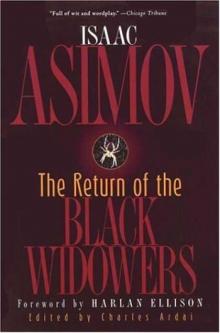 The Return of the Black Widowers
The Return of the Black Widowers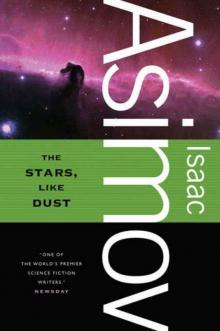 The Stars, Like Dust
The Stars, Like Dust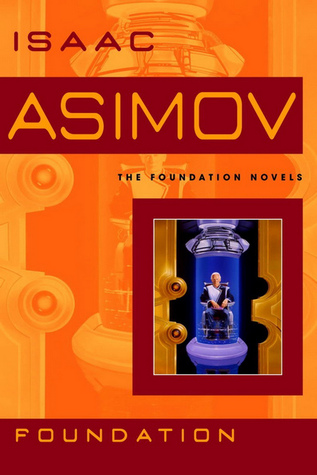 Foundation
Foundation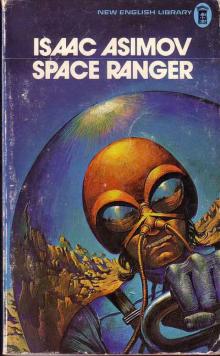 David Starr Space Ranger
David Starr Space Ranger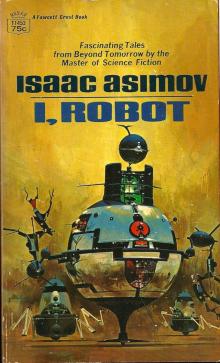 I, Robot
I, Robot Puzzles of the Black Widowers
Puzzles of the Black Widowers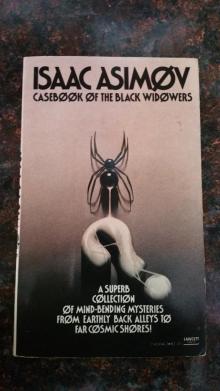 Casebook of the Black Widowers
Casebook of the Black Widowers The Ugly Little Boy
The Ugly Little Boy Azazel
Azazel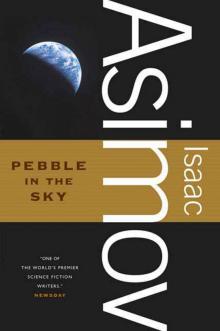 Pebble in the Sky
Pebble in the Sky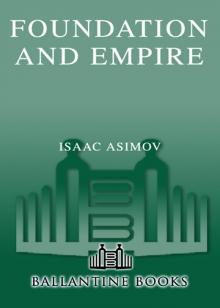 Foundation and Empire
Foundation and Empire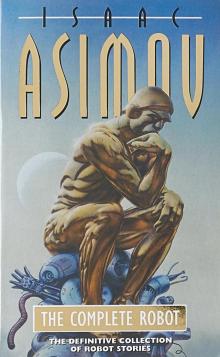 The Complete Robot
The Complete Robot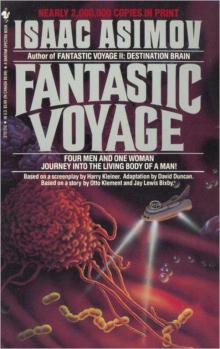 Fantastic Voyage
Fantastic Voyage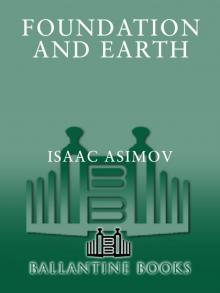 Foundation and Earth
Foundation and Earth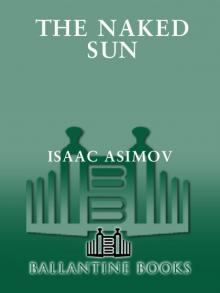 The Naked Sun
The Naked Sun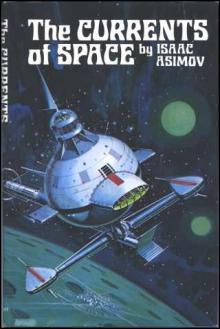 The Currents of Space
The Currents of Space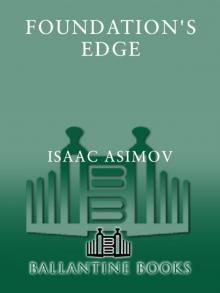 Foundation's Edge
Foundation's Edge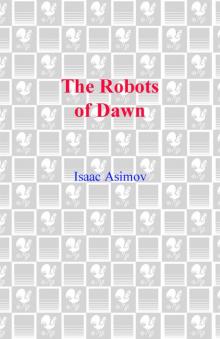 The Robots of Dawn
The Robots of Dawn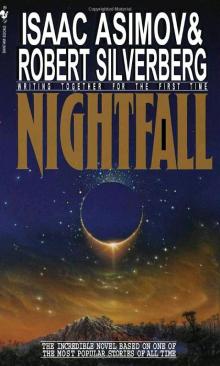 Nightfall
Nightfall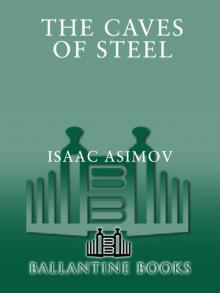 The Caves of Steel
The Caves of Steel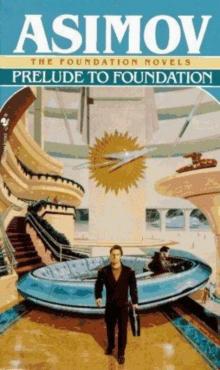 Prelude to Foundation
Prelude to Foundation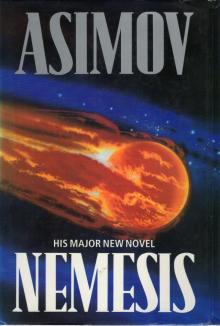 Nemesis
Nemesis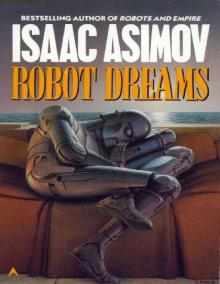 Robot Dreams
Robot Dreams More Tales of the Black Widowers
More Tales of the Black Widowers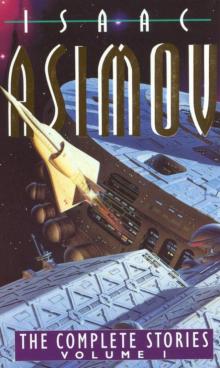 The Complete Stories
The Complete Stories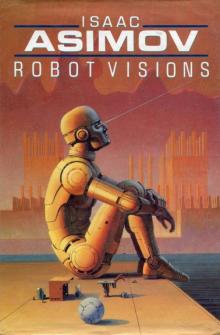 Robot Visions
Robot Visions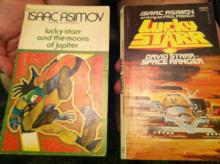 Lucky Starr And The Moons of Jupiter
Lucky Starr And The Moons of Jupiter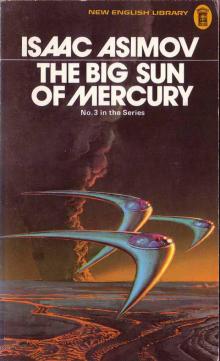 Lucky Starr and the Big Sun of Mercury
Lucky Starr and the Big Sun of Mercury The End of Eternity
The End of Eternity The Bicentennial Man and Other Stories
The Bicentennial Man and Other Stories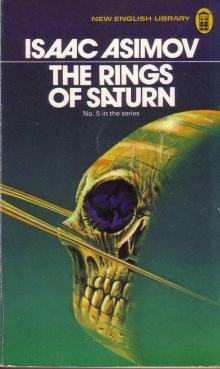 Lucky Starr And The Rings Of Saturn
Lucky Starr And The Rings Of Saturn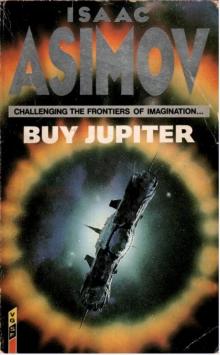 Buy Jupiter and Other Stories
Buy Jupiter and Other Stories Forward the Foundation
Forward the Foundation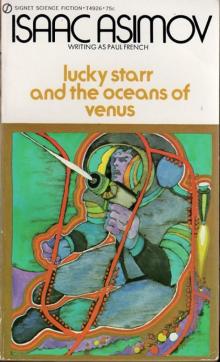 Lucky Starr and the Oceans of Venus
Lucky Starr and the Oceans of Venus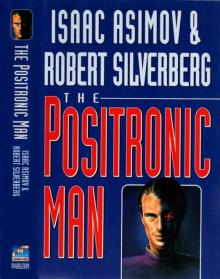 The Positronic Man
The Positronic Man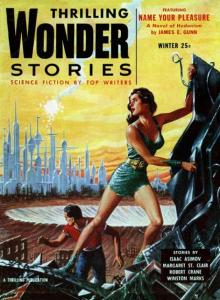 The Portable Star
The Portable Star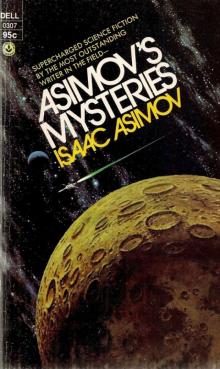 Asimovs Mysteries
Asimovs Mysteries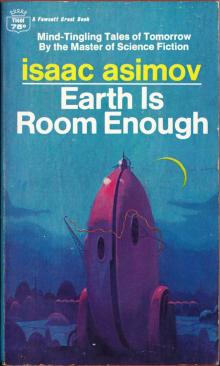 Earth Is Room Enough
Earth Is Room Enough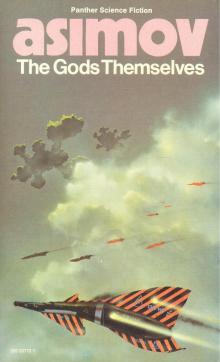 The Gods Themselves
The Gods Themselves Youth
Youth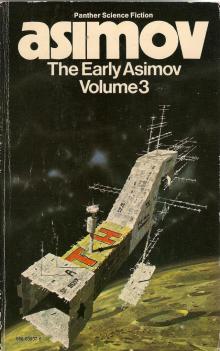 The Early Asimov Volume 3
The Early Asimov Volume 3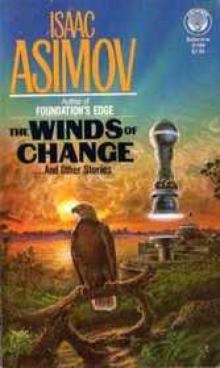 The Winds of Change and Other Stories
The Winds of Change and Other Stories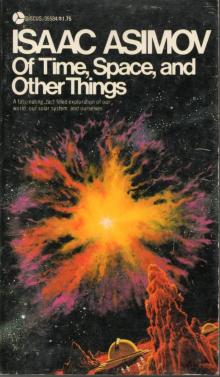 Of Time, Space, and Other Things
Of Time, Space, and Other Things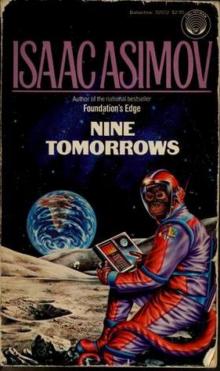 Nine Tomorrows
Nine Tomorrows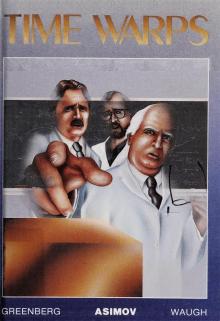 Time Warps
Time Warps Robots and Empire
Robots and Empire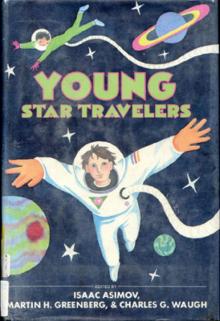 Young Star Travelers
Young Star Travelers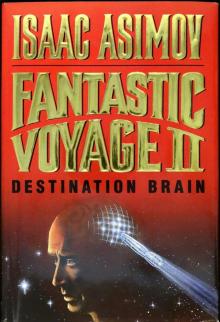 Fantastic Voyage II: Destination Brain
Fantastic Voyage II: Destination Brain Second Foundation
Second Foundation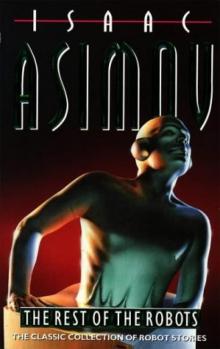 The Rest of the Robots
The Rest of the Robots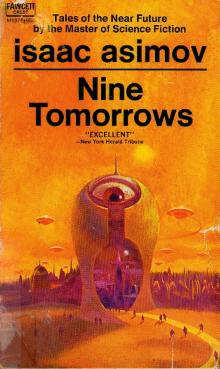 NINE TOMORROWS Tales of the Near Future
NINE TOMORROWS Tales of the Near Future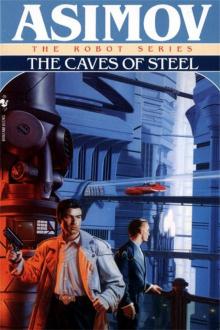 Daneel Olivaw 1 - The Caves of Steel
Daneel Olivaw 1 - The Caves of Steel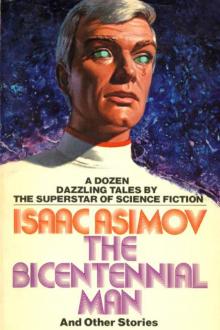 THE BICENTENNIAL MAN
THE BICENTENNIAL MAN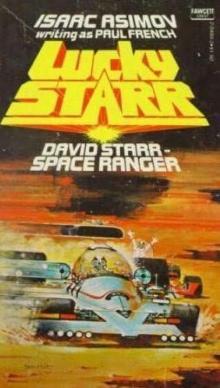 David Starr Space Ranger (lucky starr)
David Starr Space Ranger (lucky starr)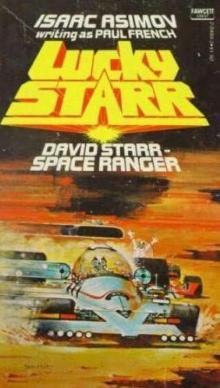 David Starr Space Ranger (ls)
David Starr Space Ranger (ls)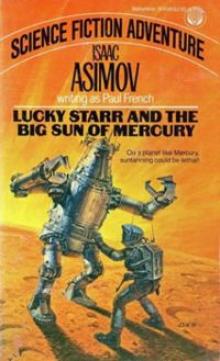 Lucky Starr And The Big Sun Of Mercury ls-4
Lucky Starr And The Big Sun Of Mercury ls-4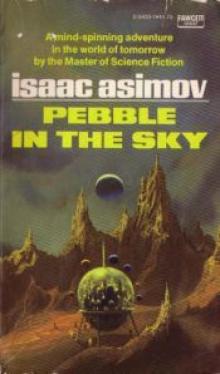 Pebble In The Sky te-1
Pebble In The Sky te-1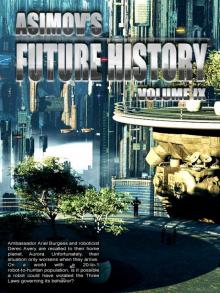 Asimov’s Future History Volume 9
Asimov’s Future History Volume 9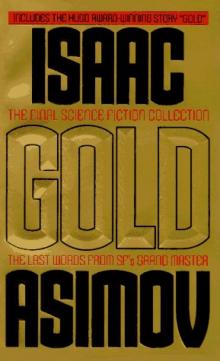 Gold: The Final Science Fiction Collection
Gold: The Final Science Fiction Collection Foundation and Earth f-7
Foundation and Earth f-7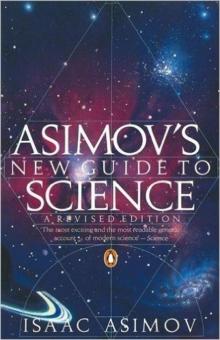 Asimov's New Guide to Science
Asimov's New Guide to Science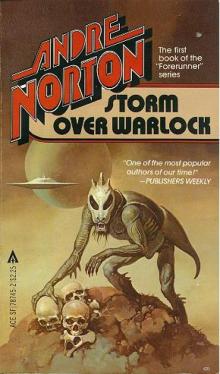 STORM OVER WARLOCK
STORM OVER WARLOCK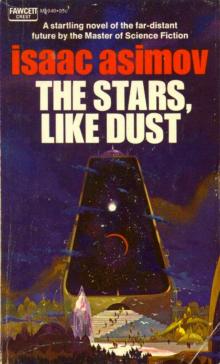 Stars, Like Dust
Stars, Like Dust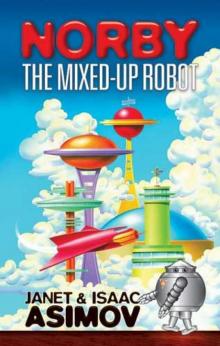 Norby The Mixed-Up Robot
Norby The Mixed-Up Robot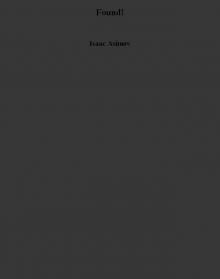 Found!
Found!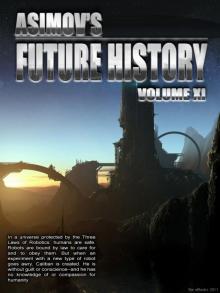 Asimov’s Future History Volume 11
Asimov’s Future History Volume 11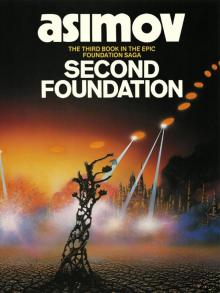 Second Foundation f-5
Second Foundation f-5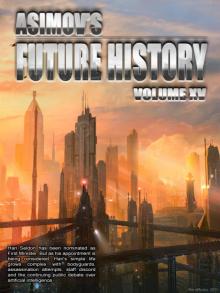 Asimov’s Future History Volume 15
Asimov’s Future History Volume 15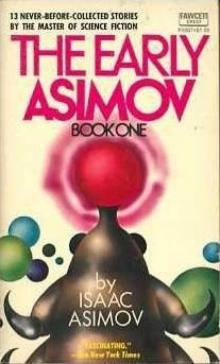 The Early Asimov. Volume 1
The Early Asimov. Volume 1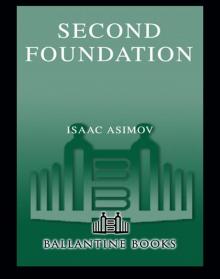 Secound Foundation
Secound Foundation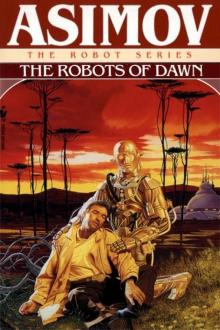 Daneel Olivaw 3 - The Robots of Dawn
Daneel Olivaw 3 - The Robots of Dawn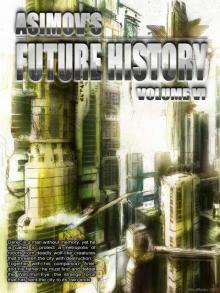 Asimov’s Future History Volume 6
Asimov’s Future History Volume 6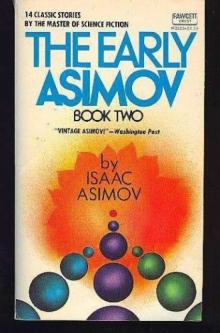 The Early Asimov. Volume 2
The Early Asimov. Volume 2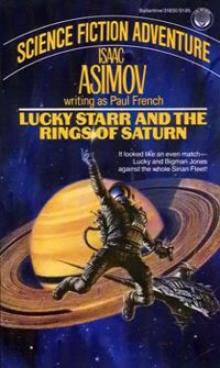 Lucky Starr And The Rings Of Saturn ls-6
Lucky Starr And The Rings Of Saturn ls-6 100 Malicious Little Mysteries
100 Malicious Little Mysteries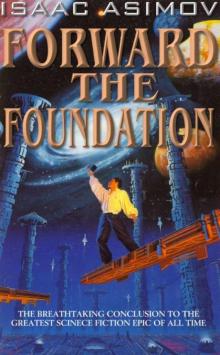 Forward the Foundation f-2
Forward the Foundation f-2 I.Asimov: A Memoir
I.Asimov: A Memoir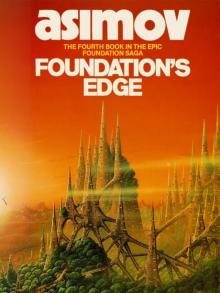 Foundation's Edge f-6
Foundation's Edge f-6 Lucky Starr and the Pirates of the Asteroids ls-2
Lucky Starr and the Pirates of the Asteroids ls-2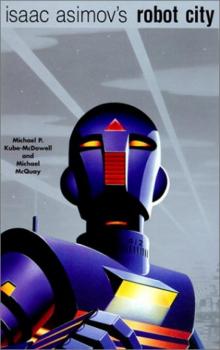 Robot City 1 & 2
Robot City 1 & 2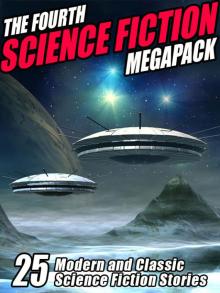 The Fourth Science Fiction Megapack
The Fourth Science Fiction Megapack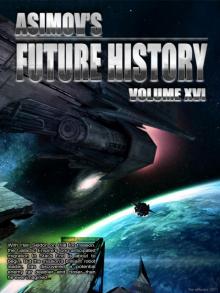 Asimov’s Future History Volume 16
Asimov’s Future History Volume 16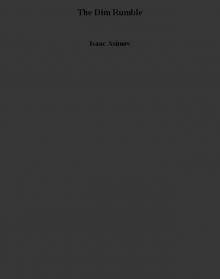 The Dim Rumble
The Dim Rumble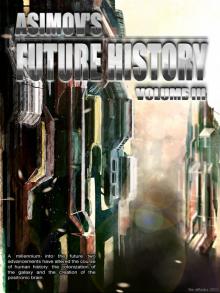 Asimov's Future History Volume 3
Asimov's Future History Volume 3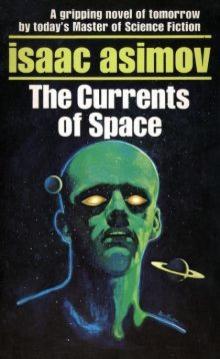 The Currents Of Space te-3
The Currents Of Space te-3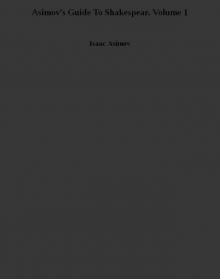 Asimov’s Guide To Shakespear. Volume 1
Asimov’s Guide To Shakespear. Volume 1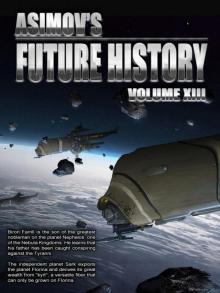 Asimov’s Future History Volume 13
Asimov’s Future History Volume 13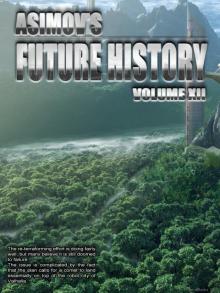 Asimov’s Future History Volume 12
Asimov’s Future History Volume 12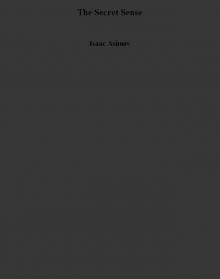 The Secret Sense
The Secret Sense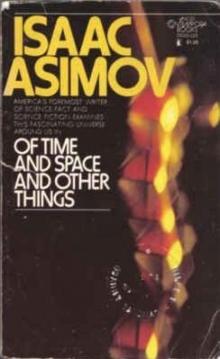 Of Time and Space and Other Things
Of Time and Space and Other Things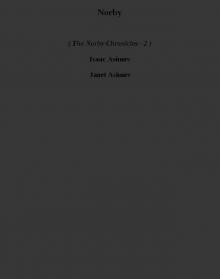 Norby tnc-2
Norby tnc-2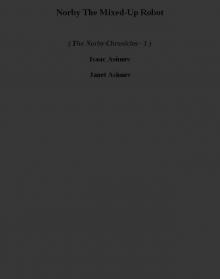 Norby The Mixed-Up Robot tnc-1
Norby The Mixed-Up Robot tnc-1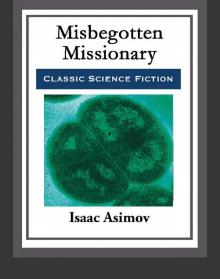 Misbegotten Missionary
Misbegotten Missionary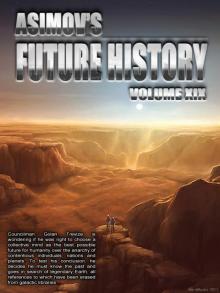 Asimov’s Future History Volume 19
Asimov’s Future History Volume 19 Fantastic Voyage II: Destination Brain fv-2
Fantastic Voyage II: Destination Brain fv-2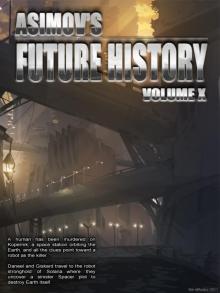 Asimov’s Future History Volume 10
Asimov’s Future History Volume 10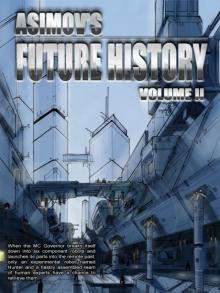 Asimov's Future History Volume 2
Asimov's Future History Volume 2 Feeling of Power
Feeling of Power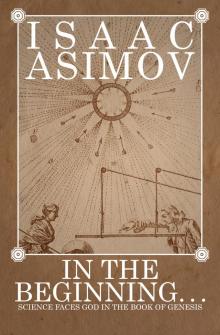 In the Beginning
In the Beginning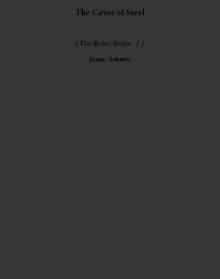 The Caves of Steel trs-1
The Caves of Steel trs-1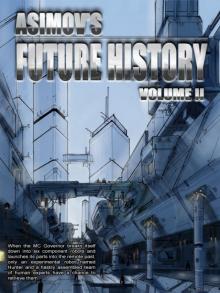 Asimov's Future History Vol 2
Asimov's Future History Vol 2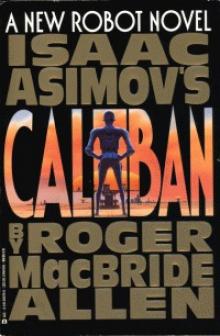 Caliban c-1
Caliban c-1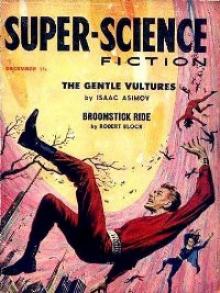 The Gentle Vultures
The Gentle Vultures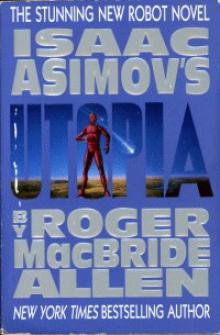 Utopia c-3
Utopia c-3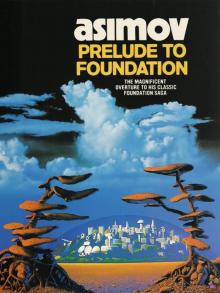 Prelude to Foundation f-1
Prelude to Foundation f-1 Short Stories Vol.1
Short Stories Vol.1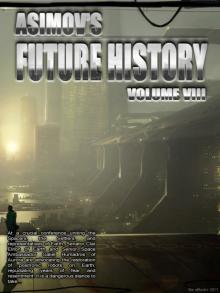 Asimov’s Future History Volume 8
Asimov’s Future History Volume 8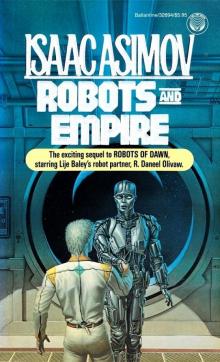 Daneel Olivaw 4 - Robots and Empire
Daneel Olivaw 4 - Robots and Empire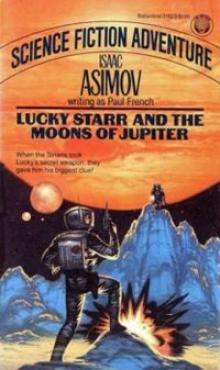 Lucky Starr The And The Moons of Jupiter ls-5
Lucky Starr The And The Moons of Jupiter ls-5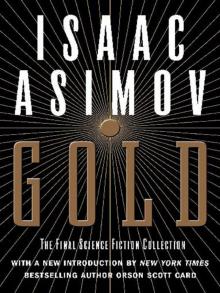 Gold
Gold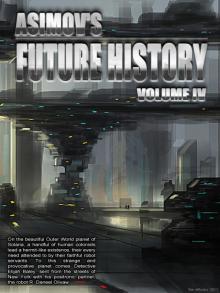 Asimov’s Future History Volume 4
Asimov’s Future History Volume 4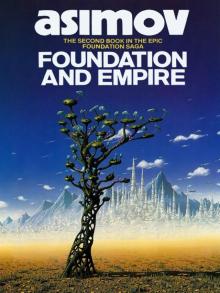 Foundation and Empire f-4
Foundation and Empire f-4 Potential
Potential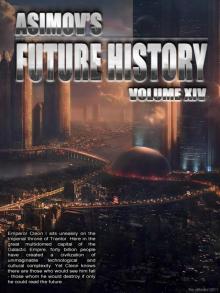 Asimov’s Future History Volume 14
Asimov’s Future History Volume 14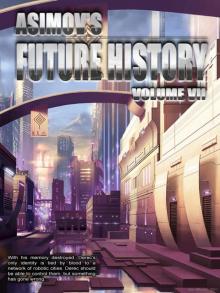 Asimov’s Future History Volume 7
Asimov’s Future History Volume 7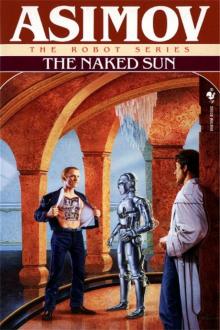 Daneel Olivaw 2 - The Naked Sun
Daneel Olivaw 2 - The Naked Sun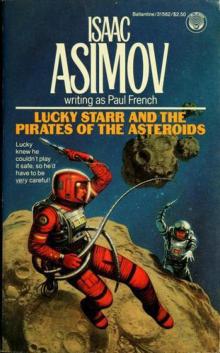 Lucky Starr and the Pirates of the Asteroids
Lucky Starr and the Pirates of the Asteroids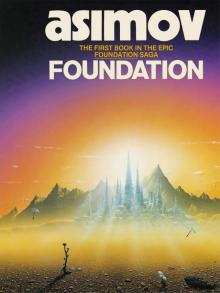 Foundation f-3
Foundation f-3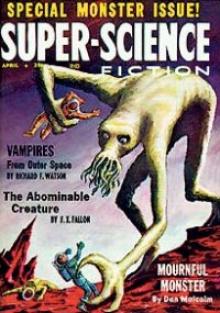 All the Troubles of the World
All the Troubles of the World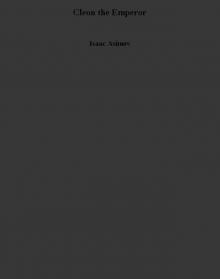 Cleon the Emperor
Cleon the Emperor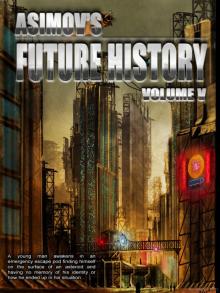 Asimov's Future History Volume 5
Asimov's Future History Volume 5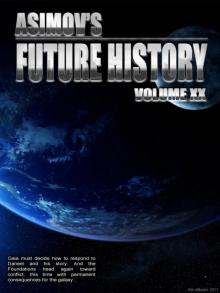 Asimov’s Future History Volume 20
Asimov’s Future History Volume 20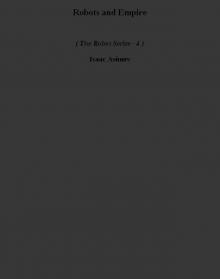 Robots and Empire trs-4
Robots and Empire trs-4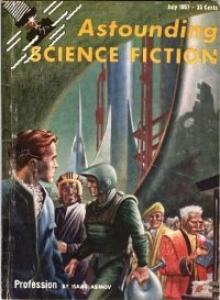 Profession
Profession It's Been a Good Life
It's Been a Good Life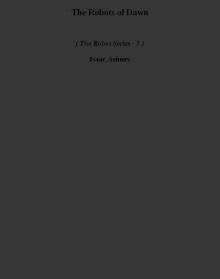 The Robots of Dawn trs-3
The Robots of Dawn trs-3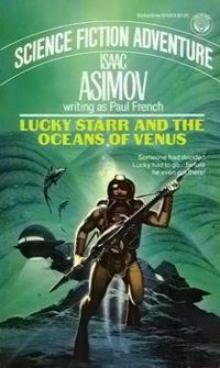 Lucky Starr And The Oceanf Of Venus ls-3
Lucky Starr And The Oceanf Of Venus ls-3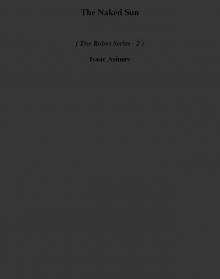 The Naked Sun trs-2
The Naked Sun trs-2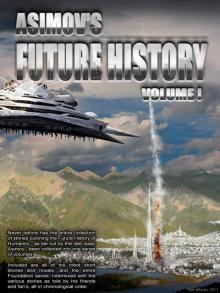 Asimov's Future History Volume 1
Asimov's Future History Volume 1